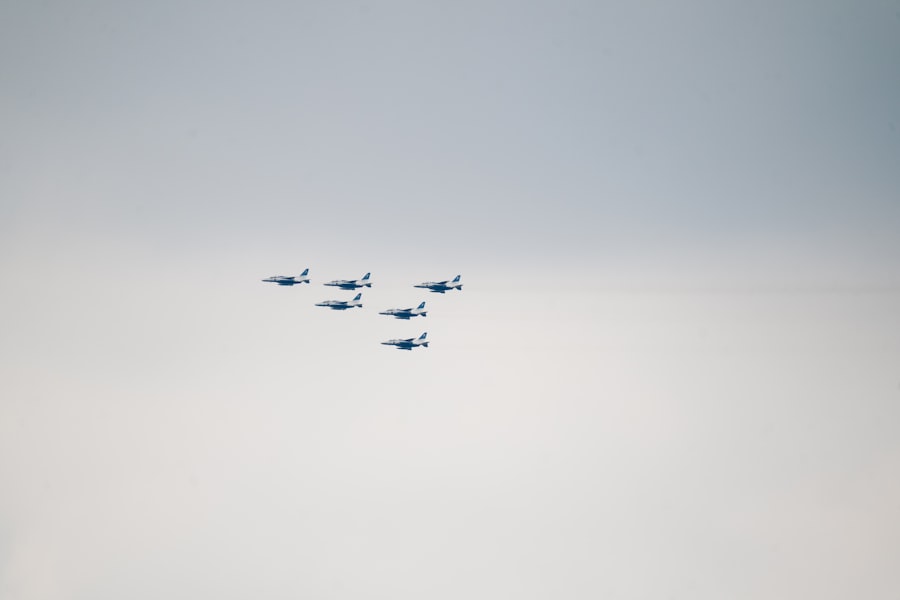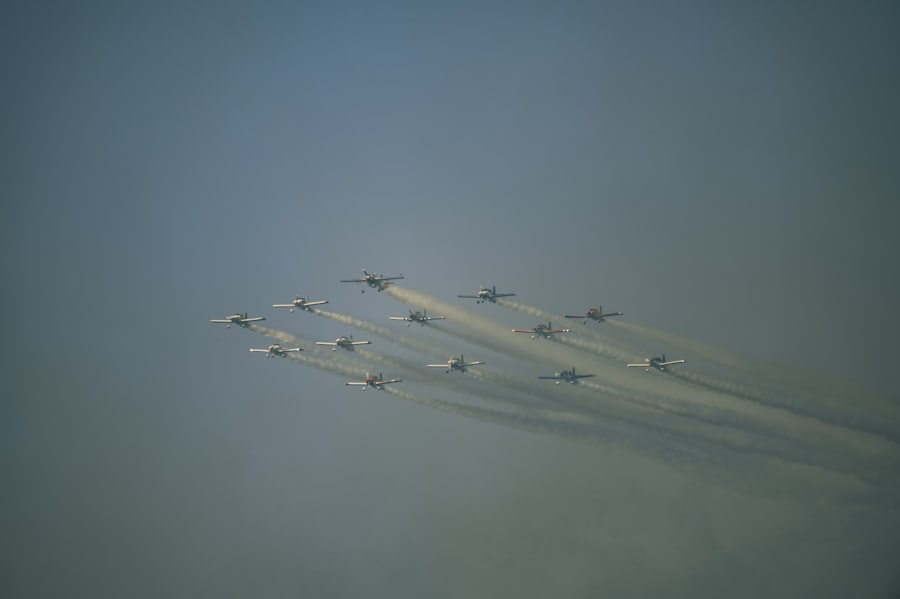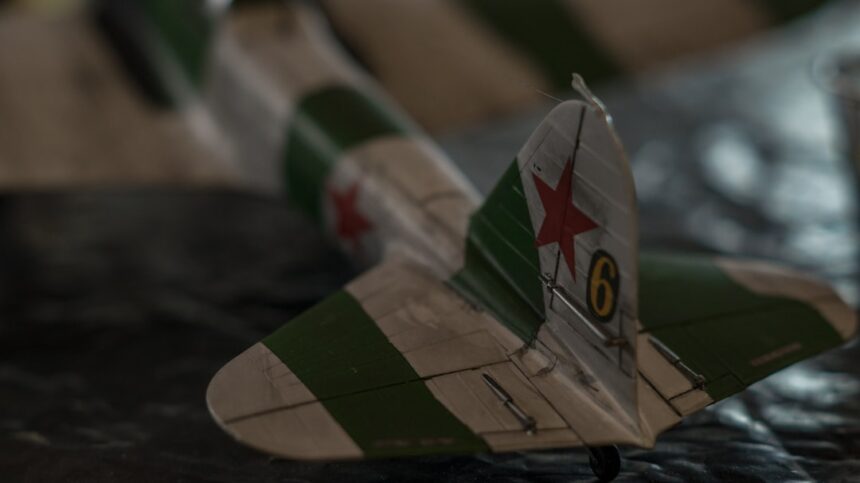The origins of the Soviet Air Defense System can be traced back to the tumultuous years following World War
As the Soviet Union emerged as a superpower, it recognized the necessity of establishing a robust air defense mechanism to protect its vast territory from potential aerial threats. The devastation experienced during the war underscored the importance of safeguarding the homeland against enemy air attacks. Consequently, the Soviet leadership initiated a comprehensive strategy to develop an air defense system that would not only deter adversaries but also ensure the security of its borders.
In the early stages, the Soviet Air Defense System was characterized by a patchwork of various military branches, each responsible for different aspects of air defense. The Red Army, Navy, and Air Force all contributed to the overarching goal of creating a unified defense network. This initial fragmentation, however, posed challenges in coordination and effectiveness.
As the Cold War intensified, the need for a more integrated and sophisticated air defense system became increasingly apparent, leading to significant investments in technology and infrastructure.
Key Takeaways
- The Soviet Air Defense System was developed in response to the threat of Western air power during the Cold War.
- Soviet air defense technology was heavily reliant on radar for early warning and tracking of enemy aircraft.
- The integration of air defense with the Soviet military was crucial for the overall defense strategy of the country.
- The Soviet Air Defense System had a significant impact on Cold War politics, shaping the strategic decisions of both the Soviet Union and the West.
- The legacy of the Soviet Air Defense System continues to be studied and compared with Western air defense systems, even after the end of the Cold War.
The Threat of Western Air Power

The emergence of Western air power during the Cold War presented a formidable challenge to Soviet security. The United States and its NATO allies developed advanced aircraft and strategic bombers capable of penetrating Soviet airspace, raising alarms within the Kremlin. The fear of a surprise attack from the West loomed large, prompting Soviet leaders to prioritize the enhancement of their air defense capabilities.
This perceived threat was not merely theoretical; it was underscored by incidents such as the Berlin Airlift and the Korean War, which demonstrated the effectiveness of Western air operations. In response to this escalating threat, the Soviet Union sought to create a multi-layered air defense system that could counteract various types of aerial assaults. The focus was not only on intercepting bombers but also on addressing the growing concern over missile technology.
The development of intercontinental ballistic missiles (ICBMs) by the United States further complicated the strategic landscape, compelling Soviet military planners to rethink their approach to air defense. The urgency to protect critical infrastructure and military installations became paramount, leading to an aggressive expansion of air defense resources.
The Development of Soviet Air Defense Technology
| Year | Technology Advancement | Impact |
|---|---|---|
| 1940s | Introduction of radar systems | Improved early warning and detection capabilities |
| 1950s | Development of surface-to-air missiles (SAMs) | Enhanced air defense capabilities against enemy aircraft |
| 1960s | Integration of anti-aircraft artillery and SAMs | Increased effectiveness in countering aerial threats |
| 1970s | Advancements in electronic warfare systems | Improved ability to disrupt and counter enemy electronic systems |
| 1980s | Deployment of advanced long-range SAMs | Extended air defense coverage and capabilities |
The development of Soviet air defense technology was marked by rapid advancements and innovative approaches. In the 1950s and 1960s, the Soviet Union invested heavily in research and development, resulting in a range of sophisticated systems designed to detect and intercept enemy aircraft. One of the most significant breakthroughs was the introduction of surface-to-air missiles (SAMs), which provided a formidable countermeasure against high-flying bombers.
The S-75 Dvina, known in the West as SA-2 Guideline, became a cornerstone of Soviet air defense strategy and was widely exported to allied nations. As technology evolved, so did the complexity of Soviet air defense systems. The integration of radar technology played a crucial role in enhancing detection capabilities.
By employing advanced radar systems, Soviet forces could track multiple targets simultaneously, allowing for coordinated responses to aerial threats. This technological evolution was not without its challenges; however, as the rapid pace of innovation often outstripped operational readiness. Nevertheless, the commitment to developing cutting-edge technology laid the groundwork for a formidable air defense network.
The Role of Radar in Soviet Air Defense
Radar technology emerged as a linchpin in the effectiveness of the Soviet Air Defense System. The ability to detect incoming aircraft at long ranges provided a critical advantage in preemptively identifying threats. Early radar systems were relatively rudimentary, but as advancements were made, they became increasingly sophisticated, capable of distinguishing between friendly and hostile aircraft with greater accuracy.
This capability was essential for minimizing friendly fire incidents and ensuring that defensive measures were directed at genuine threats. Moreover, radar systems were integrated into a broader command and control framework that allowed for real-time data sharing among various military branches. This integration facilitated coordinated responses to aerial incursions, enabling Soviet forces to deploy interceptors or surface-to-air missiles effectively.
The reliance on radar technology also underscored the importance of electronic warfare capabilities, as adversaries sought to jam or deceive radar systems. Consequently, the Soviets invested in countermeasures to enhance their radar resilience, ensuring that their air defense network remained robust against evolving threats.
The Strategic Importance of the Soviet Air Defense System

The strategic importance of the Soviet Air Defense System cannot be overstated. It served as a critical component of national security policy during a period marked by geopolitical tensions and military confrontations. By establishing a formidable air defense network, the Soviet Union aimed to project strength and deter potential aggressors from launching aerial attacks.
This deterrent effect was particularly vital given the vast expanse of Soviet territory, which included numerous strategic military installations and urban centers that required protection. Furthermore, the air defense system played a pivotal role in shaping Soviet military doctrine. It influenced not only defensive strategies but also offensive planning, as military leaders recognized that control of the skies was essential for successful operations.
The emphasis on air superiority led to a comprehensive approach that integrated ground-based defenses with aerial capabilities, creating a synergistic effect that enhanced overall military effectiveness. In this context, the air defense system became a symbol of national pride and technological prowess.
The Integration of Air Defense with the Soviet Military
The integration of air defense with the broader Soviet military structure was a complex undertaking that required coordination among various branches and agencies. The establishment of dedicated air defense forces allowed for specialized training and operational focus on intercepting aerial threats. This organizational shift marked a departure from earlier practices where air defense responsibilities were dispersed among different military units.
By centralizing command and control within dedicated air defense formations, the Soviets aimed to streamline decision-making processes and enhance operational efficiency. Moreover, this integration extended beyond mere organizational structure; it encompassed joint exercises and collaborative planning among ground forces, air forces, and naval units. Such cooperation ensured that all branches were prepared to respond cohesively to potential threats.
The emphasis on joint operations reflected an understanding that modern warfare required a holistic approach, where air defense capabilities were seamlessly woven into broader military strategies. This integration not only improved operational readiness but also fostered a culture of collaboration among different military branches.
The Impact of the Soviet Air Defense System on Cold War Politics
The impact of the Soviet Air Defense System on Cold War politics was profound and multifaceted. As tensions between East and West escalated, the existence of a robust air defense network became a key factor in shaping diplomatic relations and military posturing. The Soviets used their air defense capabilities as leverage in negotiations with Western powers, emphasizing their commitment to national security while simultaneously projecting an image of strength on the global stage.
Additionally, incidents involving aerial confrontations further underscored the significance of air defense in Cold War dynamics. High-profile events such as U-2 spy plane incidents and reconnaissance missions highlighted the delicate balance between intelligence gathering and national security concerns. These confrontations often led to diplomatic crises that tested international relations and underscored the potential for miscalculation in an era defined by nuclear brinkmanship.
Soviet Air Defense Successes and Failures
The history of the Soviet Air Defense System is marked by both notable successes and significant failures. One of its most celebrated achievements occurred during the Vietnam War when North Vietnamese forces successfully employed Soviet-supplied SAMs against American aircraft. This demonstrated not only the effectiveness of Soviet technology but also its potential impact on global conflicts.
Such successes bolstered confidence in Soviet air defense capabilities and encouraged further investments in research and development. However, there were also notable failures that exposed vulnerabilities within the system. The inability to effectively counter advanced Western aircraft such as the F-15 and F-16 highlighted gaps in training and technology.
Additionally, incidents involving friendly fire or misidentification raised questions about operational protocols and decision-making processes within air defense units. These failures prompted introspection within Soviet military circles and led to calls for reforms aimed at enhancing both technological capabilities and operational readiness.
The Legacy of the Soviet Air Defense System
The legacy of the Soviet Air Defense System is evident in its lasting influence on contemporary military strategies worldwide. Many nations have drawn lessons from Soviet experiences in developing their own air defense networks, incorporating elements such as integrated command structures and advanced radar technologies. The emphasis on multi-layered defenses has become a hallmark of modern military doctrine, reflecting an understanding that effective air defense requires a comprehensive approach.
Moreover, the technological innovations pioneered by Soviet engineers continue to shape contemporary air defense systems globally. Concepts such as surface-to-air missile systems and integrated radar networks have been adopted and adapted by various countries seeking to enhance their own defensive capabilities. As such, the legacy of the Soviet Air Defense System extends beyond its historical context; it remains relevant in discussions surrounding modern warfare and national security.
Comparisons with Western Air Defense Systems
When comparing Soviet air defense systems with their Western counterparts, several key differences emerge that reflect divergent strategic priorities and technological approaches. Western nations tended to emphasize mobility and flexibility in their air defense strategies, often prioritizing fighter aircraft capable of intercepting threats at high speeds. In contrast, Soviet systems focused on creating extensive ground-based networks designed to provide comprehensive coverage over vast territories.
This fundamental difference in approach highlighted contrasting philosophies regarding aerial warfare and national security strategies during the Cold War era.
The Evolution of Soviet Air Defense Post-Cold War
Following the dissolution of the Soviet Union in 1991, the evolution of its air defense capabilities underwent significant changes influenced by geopolitical shifts and economic constraints. The newly independent states faced challenges in maintaining cohesive air defense networks amid budgetary limitations and political fragmentation. Many former Soviet republics struggled to sustain operational readiness as they navigated their own national security priorities.
Despite these challenges, some remnants of the Soviet air defense legacy persisted in various forms across former Soviet states. Countries like Russia continued to invest in modernizing their air defense systems while drawing upon historical lessons learned from their predecessors. This evolution reflects an ongoing commitment to adapting air defense strategies in response to emerging threats while acknowledging the foundational principles established during the Cold War era.
In conclusion, the history of the Soviet Air Defense System is a complex narrative shaped by technological advancements, geopolitical dynamics, and strategic imperatives. Its origins rooted in post-war security concerns evolved into a formidable network that influenced both military doctrine and international relations during one of history’s most turbulent periods. As nations continue to grapple with evolving threats in an increasingly interconnected world, understanding this legacy remains essential for comprehending contemporary security challenges.
The development of Soviet air defense systems during the Cold War was a complex and strategic endeavor, aimed at countering the growing threat of Western air power. The Soviets invested heavily in radar technology, surface-to-air missiles, and fighter aircraft to create a multi-layered defense network. For a deeper understanding of how these systems were integrated and evolved over time, you can explore a related article on this topic by visiting This resource provides detailed insights into the technological advancements and strategic decisions that shaped Soviet air defense capabilities. WATCH THIS 🤯How the KGB Stole America’s Future The Soviet air defense system was a network of anti-aircraft and missile defense systems designed to protect the Soviet Union from aerial threats, including enemy aircraft and ballistic missiles. The development of the Soviet air defense system began in the 1950s during the Cold War and continued to be improved and expanded throughout the following decades. The key components of the Soviet air defense system included surface-to-air missile systems, anti-aircraft artillery, radar systems, and command and control centers. The Soviets built their air defense system through a combination of research and development, industrial production, and strategic planning. They also invested heavily in training personnel to operate and maintain the system. The Soviet air defense system was considered to be highly effective, especially during the Cold War, and was credited with deterring potential aerial threats to the Soviet Union. While the Soviet air defense system was formidable, it did have some weaknesses, including vulnerabilities to advanced stealth technology and the potential for saturation attacks by enemy aircraft or missiles.FAQs
What was the Soviet air defense system?
When was the Soviet air defense system developed?
What were the key components of the Soviet air defense system?
How did the Soviets build their air defense system?
What was the effectiveness of the Soviet air defense system?
Did the Soviet air defense system have any weaknesses?




